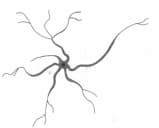Introduction to Cell
Introduction to Cell: Overview
This topic defines cells and discusses the discovery of cells. It explains in detail the characteristics, types and functions of a cell. We will also study the structure of a cell with the aid of a diagram.
Important Questions on Introduction to Cell
Identify the figure given below.

Who was the first one to see a live cell?
Which of the following organisms are not composed of cells?
Which of the following is not a cell organelle?
Which of the following forms more than of cell?
Who discovered the cell? (Robert Hooke/ Robert Koch)
Who was the person to first observe the unicellular organisms?
Choose an option with the correct statements from the list below.
i. The telomere is heterochromatic in nature.
ii. The acrocentric chromosome has centromere close to its end.
iii. Satellite is located near primary constriction.
iv. Submetacentric chromosomes are L-shaped.
Which of the following has the maximum % of the total cellular mass?
The term 'Cell' was coined by
Differentiation capacity of a compound microscope is
The term 'cell' was first coined by
Which of the following statements are false?
I. Most cells are tiny and their volume ranges from 1 to 1000 .
II. Some cells have microvilli to increase the absorptive surface area.
III. All cells arise from pre-existing cells.
IV. In plants, translocation of sucrose is performed by xylem vessels and tracheids.
V. According to cell theory, all cells arise from abiotic material.
The study related to the structure and function of a cell is called
